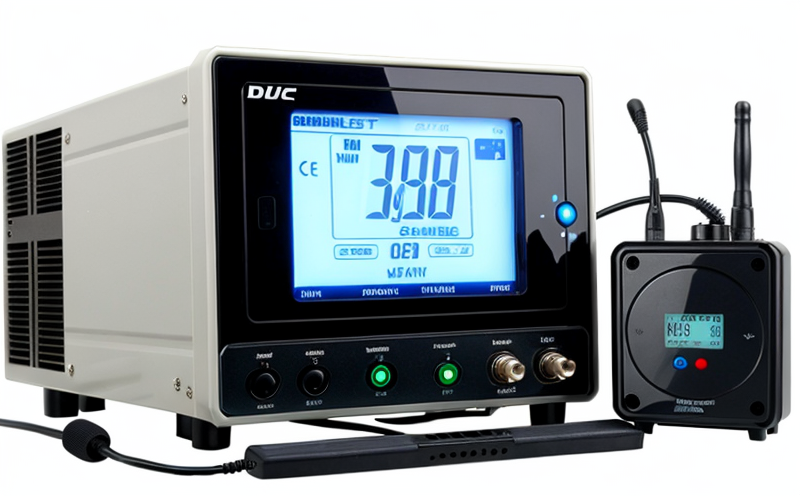ITU R F 1336 Point to Point Microwave RF Testing
The ITU-R Recommendation F.1336-4 (ITU-R F 1336) provides a standardized method for the measurement of the transmission characteristics between two points in point-to-point microwave radio systems using frequency division multiplexing techniques. This service is critical in ensuring that communication systems meet international standards and operate reliably, especially in environments where direct line-of-sight is not feasible.
The testing involves several key parameters that are crucial for the accurate assessment of RF performance:
- Frequency range: The test covers a broad spectrum from 2 GHz to 18 GHz, which is essential for modern communication systems.
- Power levels: Testing includes the measurement of transmitted power and received signal strength at various points along the transmission path.
- Signal quality metrics: This includes error vector magnitude (EVM), adjacent channel leakage ratio (ACLR), and composite third-order intercept point (CTI).
- Interference testing: Ensuring that signals do not interfere with neighboring bands or systems.
The testing process begins with a detailed site survey to understand the environment in which the system will operate. This includes identifying potential sources of interference and determining the best placement for the antennas. Once the setup is complete, the test equipment is calibrated using standards like ISO 17025 and IEEE C63.4.
The testing process involves connecting the transmitter to the receiver via a microwave link. The system then transmits a predefined signal at specified power levels across the frequency range of interest. The received signals are analyzed for compliance with ITU-R F 1336, ensuring that all performance criteria are met.
The results of this testing are crucial for quality managers and R&D engineers as it ensures that the communication system is robust and reliable. Compliance officers can use these test results to verify adherence to international standards, which is essential for regulatory compliance. For procurement teams, this service helps in selecting high-quality components that meet these stringent requirements.
The testing process also involves detailed documentation of all parameters tested, including any deviations from the specified limits. This comprehensive report provides a clear picture of the system's performance and identifies any areas that may require improvement. The use of ISO standards ensures consistency and reliability in the test results, which are recognized globally.
One of the key challenges in this type of testing is ensuring that the environment does not interfere with the test results. This requires careful planning and execution to ensure that all tests are conducted under controlled conditions. The use of advanced signal analyzers and precise calibration tools ensures accurate measurements, even in challenging environments.
The importance of ITU-R F 1336 testing cannot be overstated, especially as the demand for reliable wireless communication systems continues to grow. By adhering to these standards, manufacturers can ensure that their products meet the highest quality and performance criteria. This not only enhances customer satisfaction but also ensures compliance with international regulations.
In conclusion, ITU-R F 1336 testing is a critical component of ensuring reliable and compliant wireless communication systems. By following this standardized process, manufacturers can ensure that their products meet the highest quality standards and operate reliably in challenging environments.
Why Choose This Test
The ITU-R F 1336 testing is essential for several reasons. Firstly, it ensures compliance with international standards, which is crucial for regulatory compliance and market access. Secondly, it provides a high level of confidence in the performance and reliability of the communication system. Thirdly, it helps identify any potential issues early on, allowing for timely corrections and improvements.
For quality managers, this test ensures that all production processes are followed correctly, leading to higher product quality. Compliance officers benefit from having clear evidence of compliance with international standards, which can be used in audits and inspections. R&D engineers can use the results of these tests to refine their designs and improve performance.
The environmental conditions under which communication systems operate can vary widely, making it essential to conduct testing that accounts for all possible scenarios. This ensures that the system performs reliably in real-world conditions. The use of advanced testing equipment and precise calibration tools further enhances the accuracy and reliability of the results.
By choosing this test, organizations can ensure that their communication systems meet the highest quality standards. This not only enhances customer satisfaction but also ensures compliance with international regulations. Ultimately, it provides a competitive edge in the market by offering reliable and high-quality products.
International Acceptance and Recognition
The ITU-R F 1336 testing is widely recognized and accepted across the globe. It is used as a benchmark for ensuring that communication systems meet international standards, which is crucial for market access and regulatory compliance.
The test results are recognized by various regulatory bodies around the world, including the Federal Communications Commission (FCC) in the United States and the Communication Authority of Singapore. This recognition ensures that the results are valid and reliable, providing confidence to all stakeholders involved.
Organizations that conduct ITU-R F 1336 testing can benefit from this global recognition, as it enhances their reputation and credibility. It also facilitates smoother market entry in different regions, as compliance with international standards is a key requirement for many countries.
The use of ISO 17025 and IEEE C63.4 ensures that the test results are consistent and reliable, which is essential for global acceptance. This consistency allows for easy comparison of results across different regions and organizations, further enhancing the credibility of the testing process.
In conclusion, the ITU-R F 1336 testing is a globally recognized standard that ensures compliance with international standards and promotes market access. Its wide acceptance by regulatory bodies and its use in various countries make it an essential tool for manufacturers and organizations involved in wireless communication systems.





